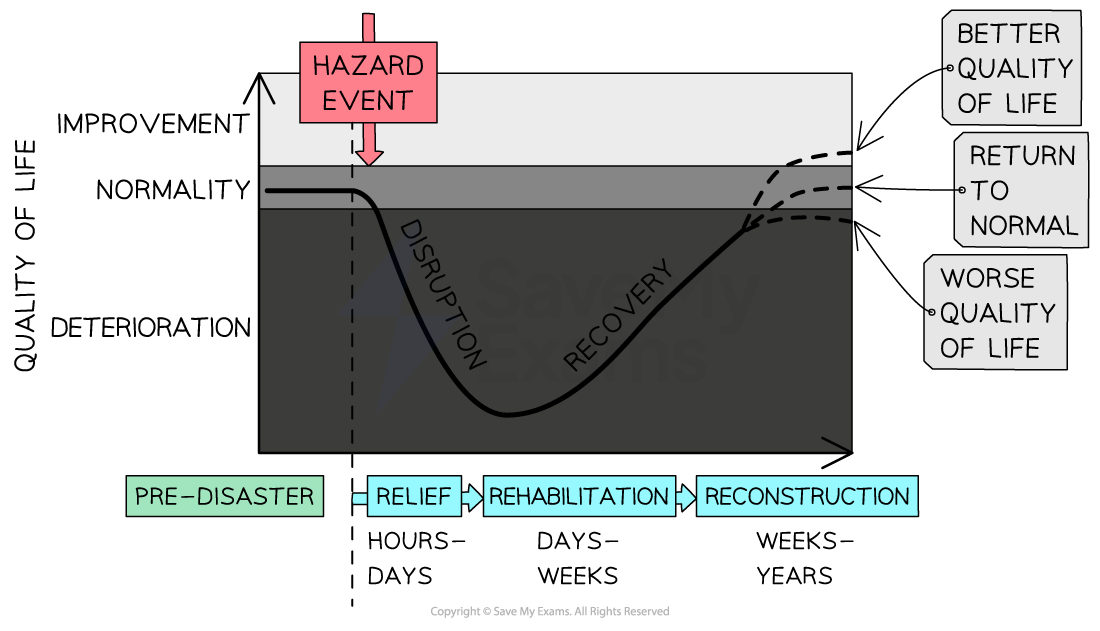Hazard Management Cycle
- The hazard management cycle is a model that shows how the events of one hazard event inform planning and preparation for the next hazard event

Hazard management cycle
Examples of Management Strategies
| Stage of model |
Examples of management strategies |
| Response | Search and rescue and provision of emergency medical assistance and aid |
| Recovery | Restoring services and reconstruction of damaged buildings |
| Mitigation |
Building flood barriers, setting up an early warning system |
| Preparedness | Earthquake drills, public awareness campaigns |
- The time taken for each stage will vary due to:
- Level of development
- Magnitude of the hazard
- Quality of governance
- Aid available
- These factors will have most impact on the response and recovery stages
Worked example
Outline the concept of the hazard management cycle.
[4 marks]
- Remember, this answer is point marked with 1 mark for each valid point made with extra marks for developed points (d)
- The command word is ‘explain’
- The focus of the question is ‘hazard management cycle’
- You will gain marks for explaining what the hazard management cycle is and outlining what happens in each of the stages
Answer:
- The hazard management cycle is a continuous loop which explains an approach to managing a known hazard (1).
- Preparedness is concerned with using evidence and data from previous events to plan for hazards associated with the event. (1) Good preparation is the key to minimising impact upon the population (1) (d).
- Response is concerned with deploying services and resources to save people and property from harm (1). Response is likely to involve emergency services such as fire and rescue teams in an earthquake (1) (d).
- Recovery is concerned with post disaster reconstruction and restoration of the local built and natural environment (1).
- Mitigation is an extension to recovery. This is the active steps taken to minimise the negative impacts associated with the hazard (1). Constructing earthquake proof buildings or flood protection systems are examples of mitigation (1) (d).



